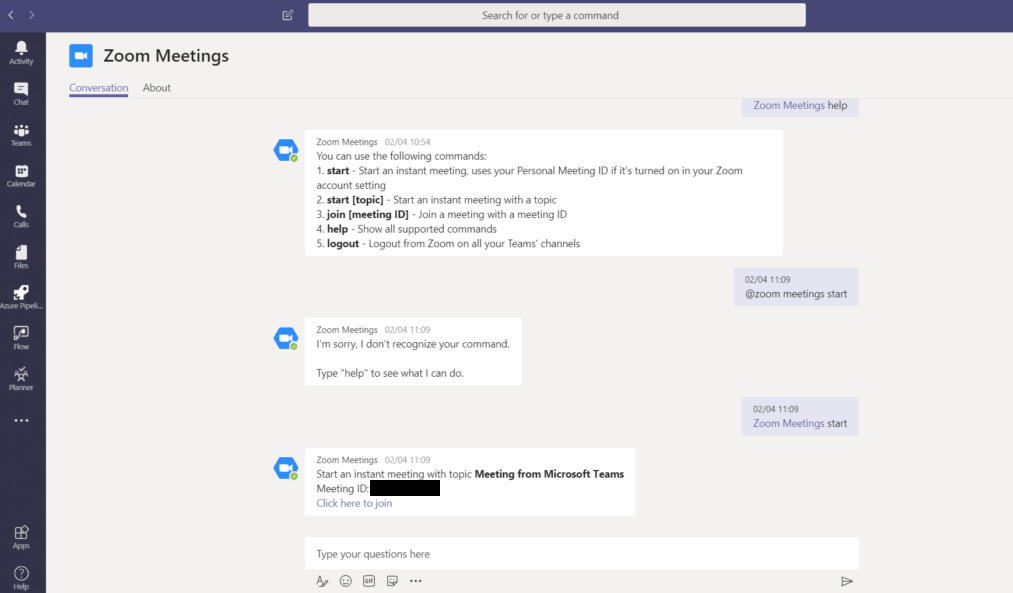With most businesses and educational establishments moving their classes and meetings online, a question emerged. Which is worth using: Microsoft Teams or Zoom? Both have merits and drawbacks—let's compare and contrast.
We will examine a few key points of what both have to offer and, hopefully, you can decide which way you swing.
Uncovering the Differences
Zoom is a communications platform that offers video and audio conferencing, chat, webinars, and all-around collaboration.
Microsoft Teams is a communications platform focusing on collaboration, video and audio conferencing, chats, and file-sharing with the Office 365 application stack.
On the surface, both platforms appear to overlap, but a closer look reveals their distinctions. We'll focus on three main points: Features, Pricing, and Privacy.
Teams Vs. Zoom: Features
1. User Interface and User Experience
Both platforms allow for meetings and chats, calls and videos, file and screen sharing. The one difference that gives Teams an edge over Zoom is its integration of the Office 365 stack. This can be an important distinction when it comes to file search and backups, as well as collaboration.
However, when it comes to the user interface, users tip the scales in Zoom's favor. People say it's a simpler interface that allows everyone, regardless of prior experience or tech knowledge, to take advantage of it. Here's where Teams' prior advantage becomes its disadvantage. Microsoft Office 365 applications within its service mean that users need a bit more time to get accustomed to how it all works and how to work it.
2. Virtual Rooms
Rooms are “virtual meeting spaces” that range from small huddles to larger conference rooms. The right system and audio-video peripherals make the experience better. The offerings from both platforms overlap. They provide users with device management, dual-screen rooms support, touch enhancements, and companion experiences with mobile.
What sets them apart is that Teams certifies only hardware devices from its partners that can work in these virtual rooms. Zoom certifies both hardware and software solutions as part of its unified communications platform.
3. Unified Communications (UC) Telephony
Being able to make calls on these platforms is an essential feature, even more so when it comes to businesses. Initially, Microsoft Teams had an advantage in this category as it already had Skype at its disposal. So it was easy to include Skype's phone feature in Teams.
Teams offers phone numbers from Microsoft, call queues, dial plans, caller ID, and auto attendants with certified endpoints.
Zoom caught up quickly. The platform came up with Zoom Phone—a cloud phone system that provides voicemails, call history, caller ID, auto-attendant, call routing and management, dialing personals, and call recording.
Both Teams and Zoom feature applications for mobile devices and desktops, as well as a PSTN (public switched telephone network) connection allowing users to make and receive external phone calls.
4. Add-ons and Integrations
Integrations, also known as app store add-ons, help users get the most out of the platform they're on.
Apart from the Office 365 apps, Teams also has over 70 integrations to improve user experience. Zoom has over 100 integrations, including one with Office 365.
Teams works as a core hub that can work with add-ons within it. While Zoom can itself work as an add-on with other apps that might want to include it.
5. Internal vs. External Communication
Microsoft Teams' chat service has the edge over Zoom's as it doesn't need users to set up a conference. They can communicate seamlessly. The added benefit of syncing Microsoft 365, and having the ability to share files, as well as calendar support, makes in-company collaboration easy and simple.
Zoom, on the other hand, allows easy communication with people outside the company circle. Its web conferences are of high quality, and it allows for multiple screen-sharing.
Teams Vs. Zoom: Pricing
Both Microsoft Teams and Zoom offer a free version of their platforms, alongside paid plans for access to more advanced features.
Teams' free version includes limited chat and collaboration, meetings, calls, security, services, and productivity apps. You miss out on access to Microsoft support and administration tools.
It's important to note that when it comes to Teams paid plans, you need to commit for a minimum of a year. That applies to all of their packages, and some people don't enjoy that kind of commitment.
Zoom's free version allows for meetings of up to 100 participants with unlimited 1:1 meetings and group ones having a cap of a 40-minute time limit. They also offer group collaboration features, online support, security, and web and video conferencing features.
Teams Vs. Zoom: Privacy
People pay attention to what happens to their data. Microsoft admits to analyzing user data so they can improve the services they offer. They state that they do not sell the data to third parties.
Zoom has previously shared user data to third parties, like Facebook, but they claim they no longer do that.
Both platforms are secure. Security features that Zoom and Teams offer include:
- 2FA / MFA
- End-to-end encryption
- SAML-based single sign-on
- Domain claiming
- End-to-end encryption
- FedRAMP Moderate Level
- User/group provisioning via SCIM/JIT
Also, Zoom provides the ability to control session duration. It also allows administrators to choose when a room disappears, as well as decide which team members get what permissions.
They also have control over disabling and enabling features like recording, screen-sharing, and private chat.
Which Should You Choose?
There isn't a straight answer and it's a personal choice. Consider what makes more sense for you or your business. What are your priorities? Can you afford to pay for special features, and do you even need special features?
While both platforms have pros and cons, users tend to agree that Microsoft Teams is a better choice for internal collaboration, and Zoom—for an external one.
Note that both platforms integrate well with each other. So, you can have both, and you use them for different things—pick the one you need whenever you need it. Why not have it all?
Also, these aren't your only two options for video calling. Skype is another competitor worth looking into.




